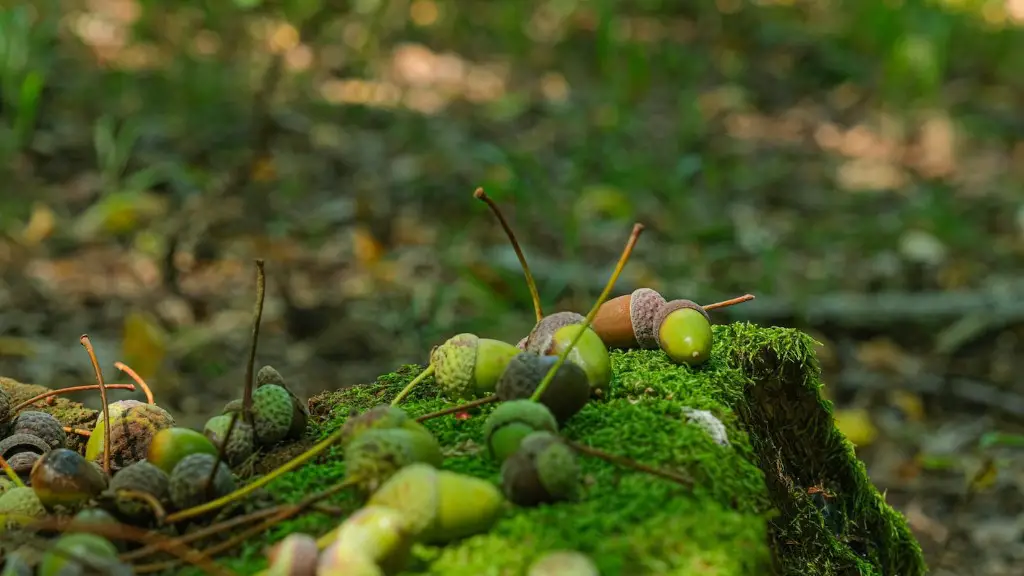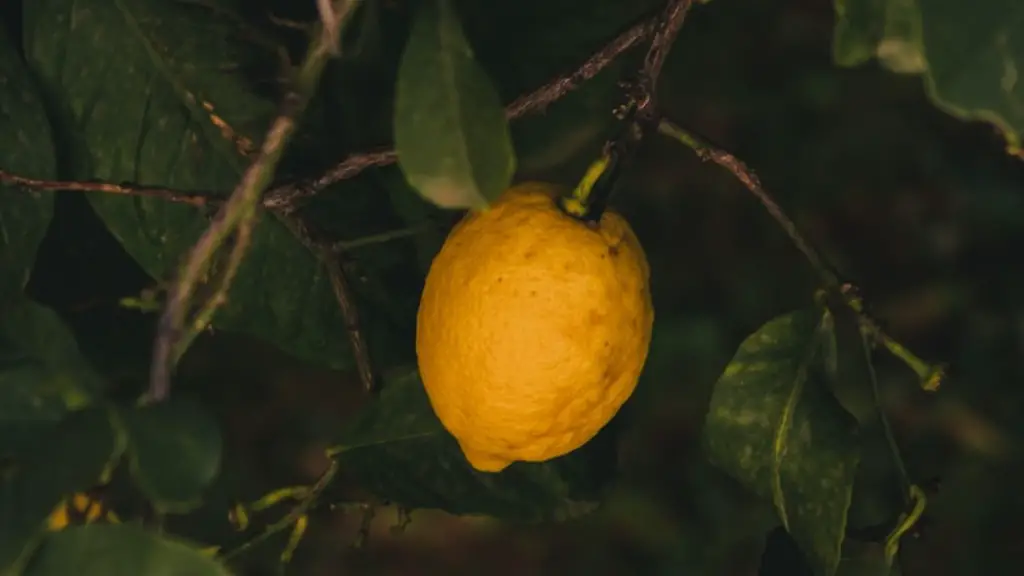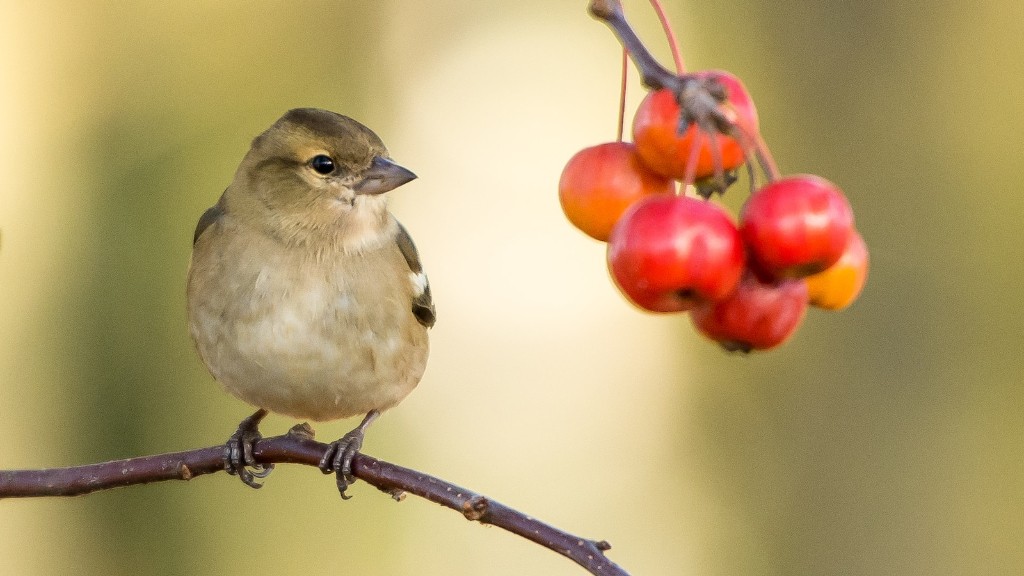One of the most common signs that a lemon tree is dead is if it is not producing any new leaves or fruits. The leaves should be a vibrant green color and the bark should be intact. If the leaves are turning brown or brittle, or the bark is missing, the tree may be dead. In addition, if the trunk is beginning to rot or split, the tree is likely dead. A lemon tree that is no longer producing flowers is also a good indicator of death.
Another sign that a lemon tree is dead is if it is no longer getting adequate water. Trees need to be watered regularly, especially during summer. If a lemon tree is not receiving enough water, its leaves and branches may start to droop, turn yellow, and eventually, the entire tree may die. Additionally, if a lemon tree is left in direct sunlight for too long, the tree can become dry and start to turn brown.
The absence of healthy roots can also indicate that a lemon tree is dead. To check the roots, remove some of the soil around the base of the tree. If there are no healthy roots present and the roots are rotted or mushy, the tree is likely dead. Additionally, if the roots are not growing deep into the ground, the tree cannot absorb the nutrients it needs to survive.
If a lemon tree is not producing any new fruits or leaves, it is likely dead. To check for fruit production, look for small, yellow fruits on the branches. If there are none, the tree is likely dead. Additionally, if the leaves are not a healthy, vibrant green color, the tree is not getting enough nutrients or sunlight to be alive.
Finally, if a lemon tree is not responding to pruning or other maintenance measures, it may be dead. Trees that are still alive should respond to pruning, fertilizing, and other maintenance measures. If the tree is not responding, it is likely dead. Additionally, if the tree is beginning to topple in one direction, it is very likely dead due to root damage.
Signs Of Life In A Lemon Tree
Although a lemon tree may appear to be dead, there may still be some signs of life. First, a slightly green tinge on the branches and leaves may indicate that the tree is still alive. Additionally, if the tree responds positively when watered, the tree may still be alive. Additionally, if the roots remain healthy and strong, the tree may still be alive.
If the trunk is still intact and there are some flowers present on the tree, it is likely alive. Flowers can signify a tree’s signs of life. Lastly, if the tree is producing a few fruits, this is a sign of life as well. Overall, it is important to try to save a lemon tree if it has any signs of life, as a dead tree will not produce any fruits or leaves.
Diagnostic Tests To Determine The Health Of A Lemon Tree
When diagnosing a lemon tree’s health, there are a few tests that can be performed. First, a soil sample should be taken to determine the nutrient content of the soil. If the soil has an inadequate amount of nutrients, the tree will struggle to survive and may eventually die. Additionally, the soil should be tested for any possible diseases or parasites that may be affecting the tree.
Also, a leaf test can be conducted to check for nutrient deficiencies. If the leaves are yellow or brown and thinning, this can indicate a lack of nutrients in the tree’s soil. Furthermore, a bark test can be used to check the tree’s health. Bark that is gray, cracked, or discolored can be a sign of disease or nutrient deficiency.
The growth rate of the tree should also be monitored. If the growth rate is slowed or halted, it may be an indication that the tree is either sick or dying. Last, a root inspection can help determine the health of a lemon tree. If the roots are rotted, mushy, or not growing deeply into the ground, the tree may be dead.
Proper Care For A Lemon Tree
Maintaining a healthy lemon tree requires proper care and monitoring. First, the tree should be pruned and trimmed regularly to keep it healthy and encourage fruit production. Additionally, the tree should be watered regularly, especially during the summer months when it is not raining. The tree should also be fertilized at least once a year for optimum growth.
In addition, the tree should be protected from direct heat during the summer months. If the tree is planted in a hot, sunny location, a shade cloth or other type of covering should be used to protect it from the harsh rays of the sun. Lastly, the soil should be regularly checked for nutrient content and any potential diseases.
Dealing With Disease In A Lemon Tree
If a lemon tree is infected with a disease, immediate action must be taken to prevent further damage. First, the infected area of the tree should be isolated from the rest of the tree, and then the diseased area should be pruned and removed. Additionally, any nearby trees or plants should be monitored for any signs of infection. The infected tree should then be treated with an appropriate fungicide or insecticide.
Also, the tree should be fertilized regularly to ensure optimal health and growth. If a lemon tree is infected with a viral or bacterial disease, specialized treatments should be used. Additionally, it is important to keep the tree away from any areas with a history of previous diseases.
If a lemon tree is infected with a fungal disease, it is important to take preventative measures such as pruning, maintaining proper soil conditions, and regularly treating the tree with a fungicide or other treatment. Lastly, regular monitoring of the tree is required as some diseases may not be apparent until the tree begins to show signs of stress.
Common Pests That Can Affect A Lemon Tree
Besides diseases, pests can also cause harm to a lemon tree. Common pests that can affect a lemon tree include aphids, mealybugs, and whiteflies. Aphids can be identified by their small, black bodies and can damage the tree by sucking out the sap from the leaves and bark. Mealybugs are small, white insects that can damage the tree by draining its nutrients.
Additionally, whiteflies are small, white insects that are likely to damage a lemon tree. These pests can be seen flying around the leaves and branches and feed on the plant’s sap. Additionally, citrus beetles can be a problem for lemon trees and can be identified by the adult beetles, which are red or yellow with black stripes, and the larvae, which are white and grub-like.
If a lemon tree is suffering from a pest infestation, it is important to take immediate action to protect the tree. Insecticidal soap, horticultural oils, and neem oil can be used to treat the tree and help eliminate any pests. Additionally, yellow sticky cards can be placed around the tree to help trap any adult pests.
Tips For Planting A Lemon Tree
If you are planting a lemon tree, there are some tips to keep in mind in order to ensure the tree is healthy and thriving. First, the tree should be planted in an area that gets plenty of sunlight and does not get too hot. Additionally, the soil should be well-drained and free of any debris. The lemon tree should be watered deeply once a week and should be fertilized with a balanced fertilizer once or twice a year.
Additionally, it is important to prune the tree regularly and to inspect it for any pests or diseases. The tree should also be mulched or covered in plastic or other material to protect the soil and prevent water loss. Lastly, it is important to water the tree deeply but not too often, as too much water can cause root rot.





